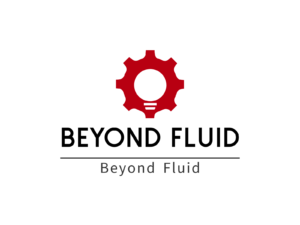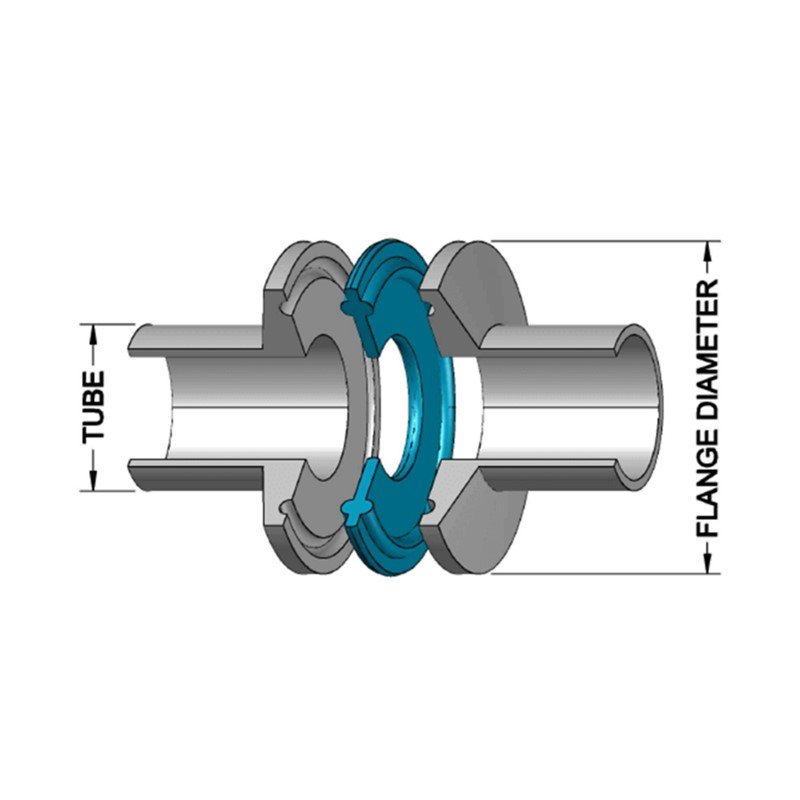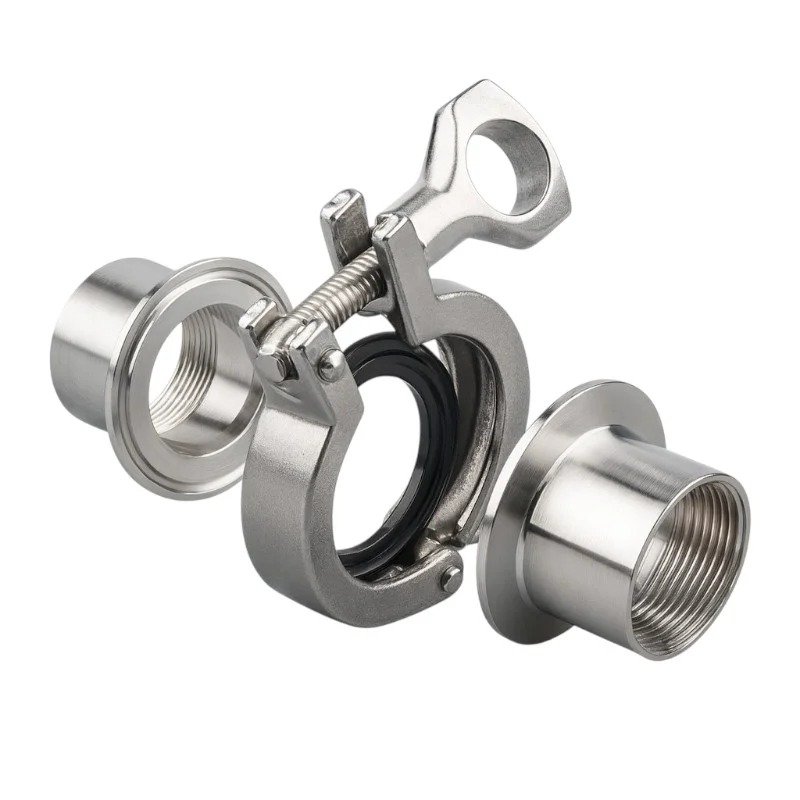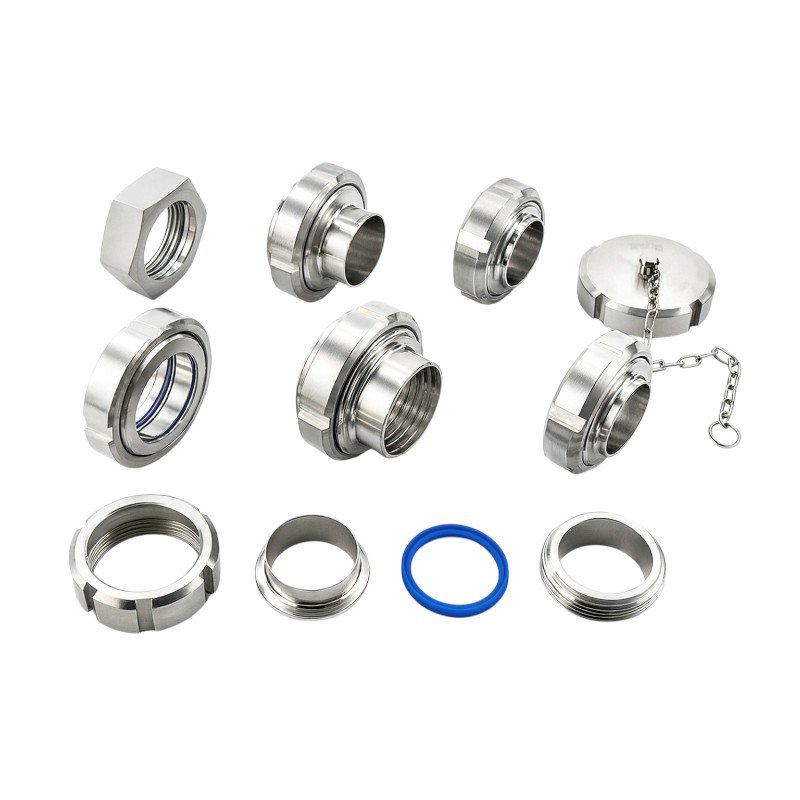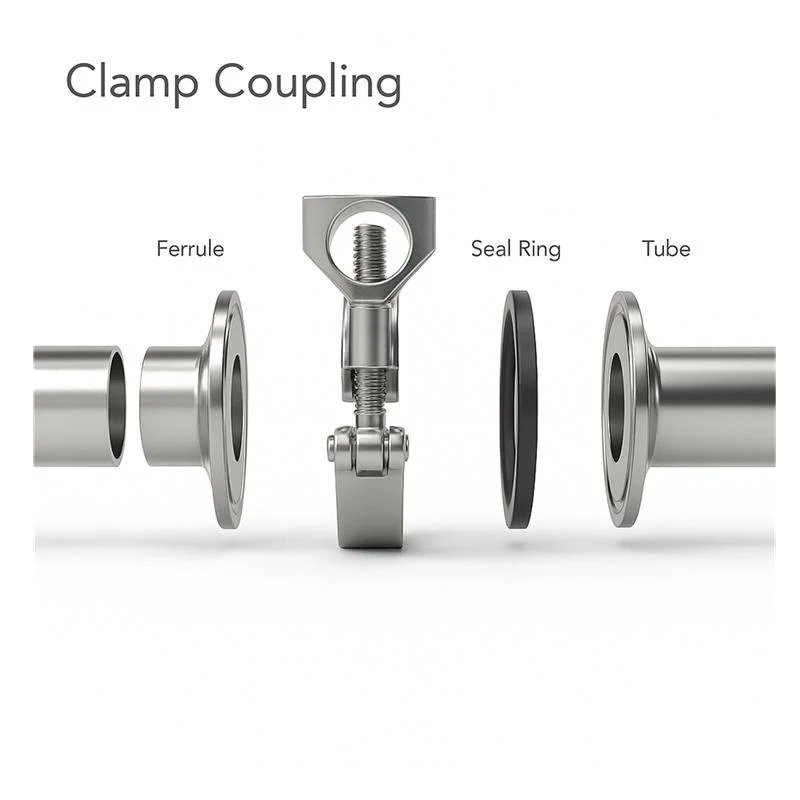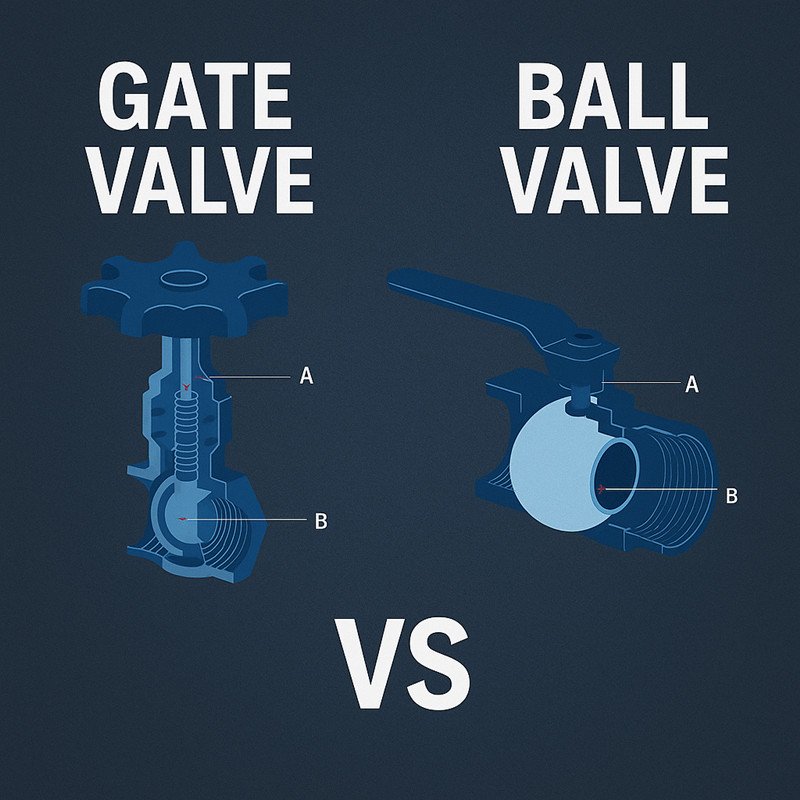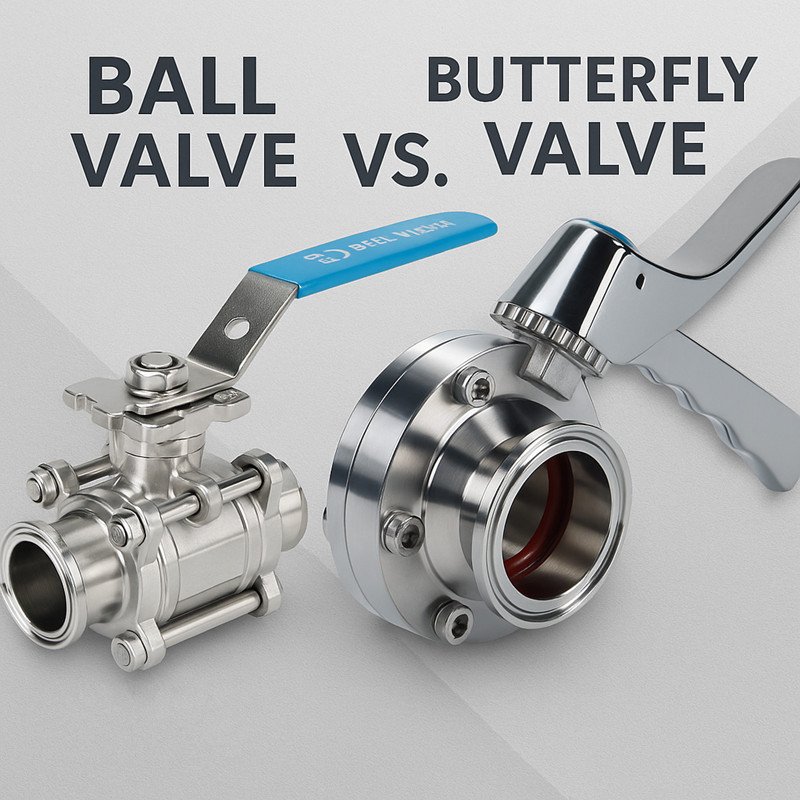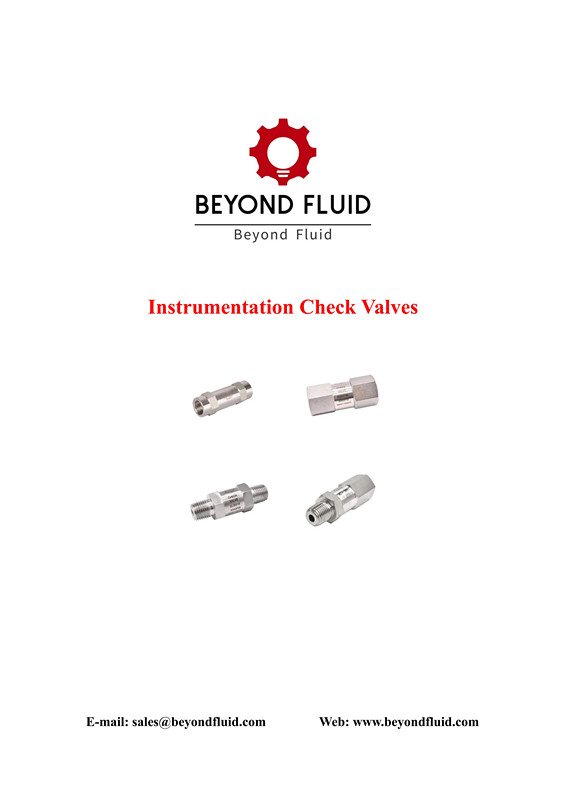
Instrumentation check valves are essential components in precision fluid control systems. Their primary purpose is to allow flow in one direction and prevent reverse flow, ensuring the safety and efficiency of sensitive equipment.
These valves are vital for applications requiring high precision and reliability, such as in oil and gas, chemical processing, pharmaceuticals, and laboratory systems.
Understanding their functionality, types, and best practices for selection and maintenance is crucial for maximizing performance in industrial and instrumentation applications.
How Do Instrumentation Check Valves Work?
Instrumentation check valves operate on the principle of unidirectional flow. They are designed to open when fluid flows in the correct direction and close automatically to block reverse flow.
The valve mechanism uses a spring-loaded disc or ball that responds to pressure changes, ensuring precision and reliability in critical operations.
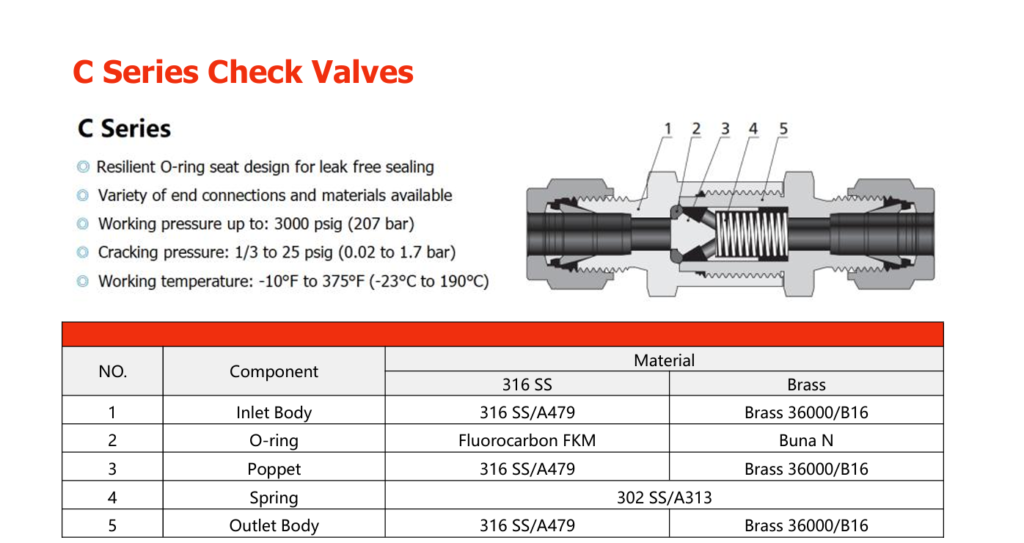
Key Components
- Disc or Ball: Moves to open or close the flow path.
- Spring: Provides force for automatic closure when the pressure drops or reverses.
- Body and Seat: Ensures a leak-tight seal to maintain system integrity.
These features make instrumentation check valves ideal for high-precision, low-flow, and high-pressure systems.
Types of Instrumentation Check Valves and Their Applications
Instrumentation check valves are available in various designs, each suited to specific needs. Below are the most common types:
Ball Check Valves
Best for: Compact systems and low-flow applications.
Advantages: Simple design, low cost.
Limitations: Limited to low-pressure environments.
Ball check valves are often used in laboratory instrumentation and small-scale chemical processes.
Spring-Loaded Check Valves
Best for: High-pressure systems requiring fast closure.
Advantages: Precision control, quick response to pressure changes.
Limitations: Higher cost compared to basic designs.
These valves are widely used in oil and gas instrumentation, where reliability under pressure is critical.
Lift Check Valves
Best for: Systems with consistent high flow rates.
Advantages: Effective for gases and liquids.
Limitations: Requires proper alignment and pressure to function optimally.
Lift check valves are common in pharmaceutical processing and gas analysis systems.
Poppet Check Valves
Best for: High-precision applications requiring minimal leakage.
Advantages: Exceptional sealing, corrosion resistance.
Limitations: Limited flow capacity.
These valves are preferred for laboratory instrumentation and analytical systems.
Dual Plate Check Valves
Best for: Systems where space-saving designs are crucial.
Advantages: Lightweight, compact.
Limitations: May introduce higher pressure drops.
Often used in compact instrumentation setups, these valves ensure efficient performance in tight spaces.
Materials and Performance Considerations for Instrumentation Check Valves
Material selection is critical for ensuring the valve’s performance, longevity, and compatibility with the media. Common materials include stainless steel, brass, and exotic alloys.
Stainless steel is the most popular choice for instrumentation check valves due to its high corrosion resistance and ability to handle extreme temperatures and pressures.
| Material | Advantages | Applications |
|---|---|---|
| Stainless Steel | Corrosion-resistant, durable | Oil and gas, chemical processing |
| Brass | Cost-effective, easy to machine | General instrumentation |
| Alloys (e.g., Monel) | High-temperature tolerance | Specialized applications |
Choosing the Right Material
When selecting a material, consider the following factors:
- Media Compatibility: Ensure resistance to corrosion or chemical reaction with the fluid.
- Pressure and Temperature Ratings: Match the valve’s specifications to system demands.
- Environmental Factors: Consider exposure to moisture, salt, or abrasive particles.
Installation and Maintenance of Instrumentation Check Valves
Proper installation and regular maintenance are essential for ensuring reliable operation and extending the lifespan of instrumentation check valves.
Follow manufacturer guidelines for alignment, sealing, and torque specifications to prevent leaks or failures.
Installation Guidelines
- Inspect the Valve: Ensure no debris or damage is present.
- Check Flow Direction: Align the valve with the system’s flow direction, as indicated by the arrow on the body.
- Secure Connections: Use appropriate fittings and tighten to the recommended torque levels.
- Test the System: Verify proper operation after installation.
Maintenance Schedule
| Task | Frequency |
|---|---|
| Visual Inspection | Monthly |
| Cleaning | Quarterly |
| Spring/Seal Replacement | Annually or as needed |
Regular maintenance minimizes the risk of leaks, noise, or system inefficiencies.
Troubleshooting Common Issues
Instrumentation check valves may encounter challenges like improper closure, noise, or pressure drops. Understanding the causes and solutions is key to maintaining efficiency.
For example, reverse flow can occur due to a damaged spring or debris in the valve seat. Cleaning or replacing components often resolves the issue.
Common Problems and Solutions
| Issue | Cause | Solution |
|---|---|---|
| Leakage | Worn seals or debris | Clean or replace seals |
| Noise | Incorrect installation | Reinstall with proper alignment |
| Pressure Drops | Improper valve size | Select a valve with suitable flow capacity |
Innovations in Instrumentation Check Valves

Recent advancements in check valve technology have introduced smart features, such as real-time monitoring and automated adjustments.
Smart instrumentation check valves with sensors provide valuable data for predictive maintenance and improved system efficiency.
Emerging Features
- IoT Integration: Enables remote monitoring of valve performance.
- Advanced Materials: Enhance durability under extreme conditions.
- Miniaturized Designs: Optimize performance in compact instrumentation systems.
Adopting these innovations helps industries improve precision and reduce operational costs.
Conclusion
Instrumentation check valves are essential for ensuring unidirectional flow and protecting sensitive equipment in precision applications. By understanding their types, materials, and proper maintenance, you can optimize system performance and extend valve lifespan.
Investing in high-quality instrumentation check valves ensures reliable operation, reduced downtime, and enhanced system safety.
FAQs
1. What are the key factors for selecting an instrumentation check valve?
Pressure, temperature, flow rate, material compatibility, and system requirements.
2. How do I prevent reverse flow in instrumentation systems?
Use high-quality check valves with precision sealing and regularly inspect for debris or wear.
3. Can instrumentation check valves be used for gases?
Yes, many types, like lift and spring-loaded valves, are ideal for gas applications.
4. How often should I maintain instrumentation check valves?
Perform monthly inspections and replace components annually or as needed.
5. What is the typical lifespan of an instrumentation check valve?
With proper maintenance, they can last several years, depending on the material and application.

